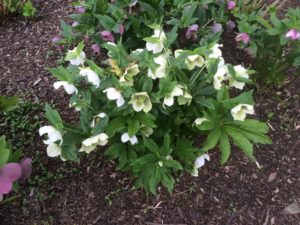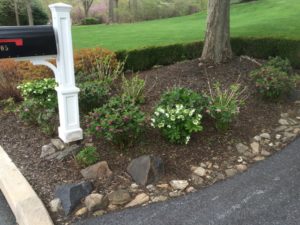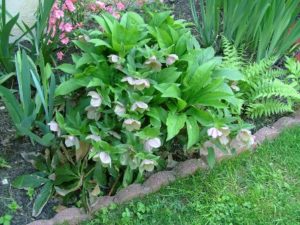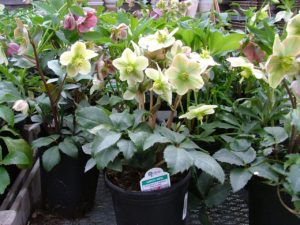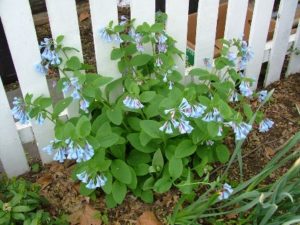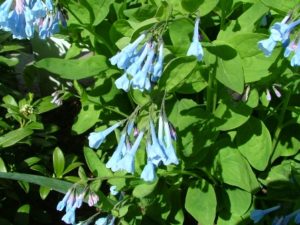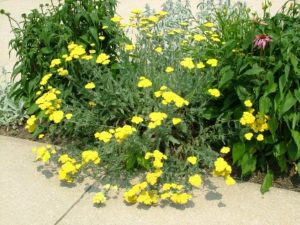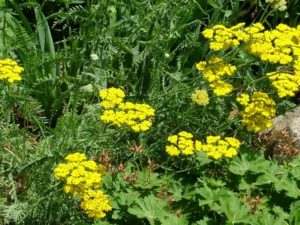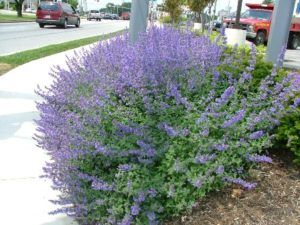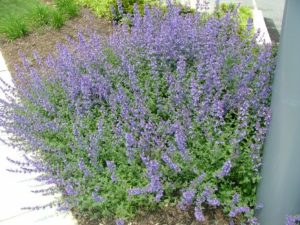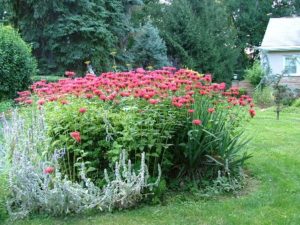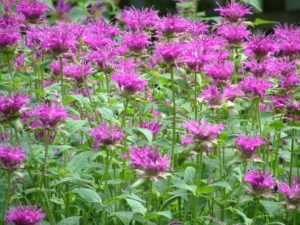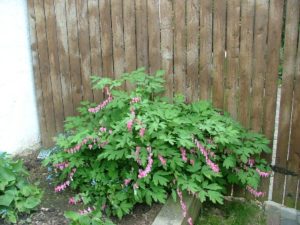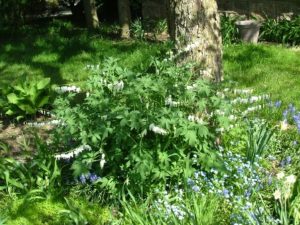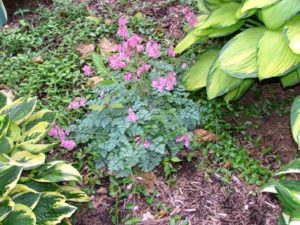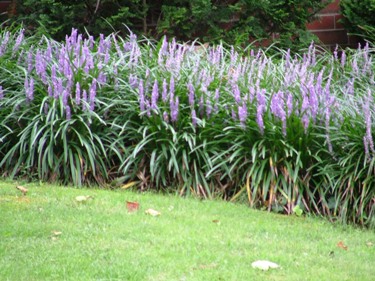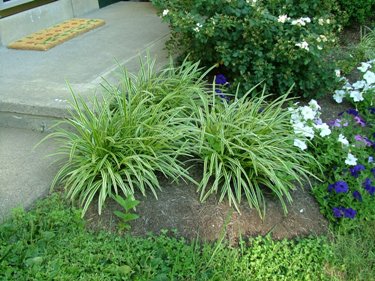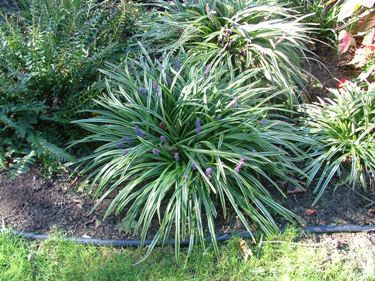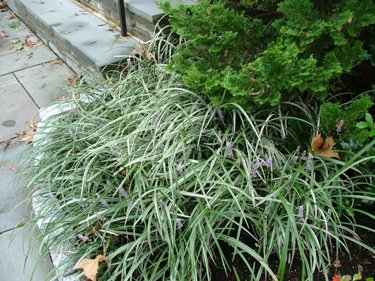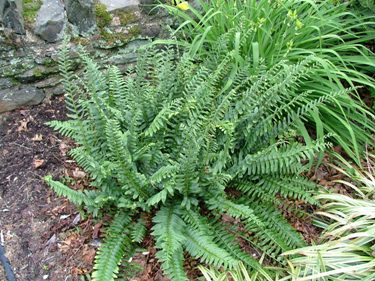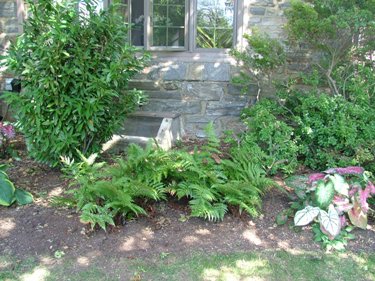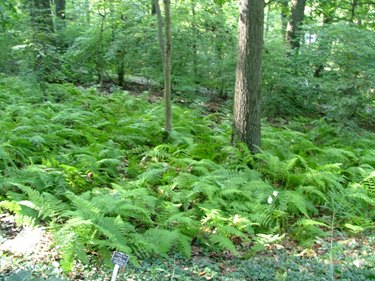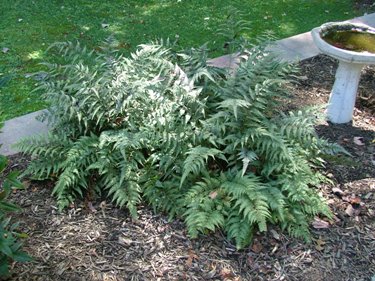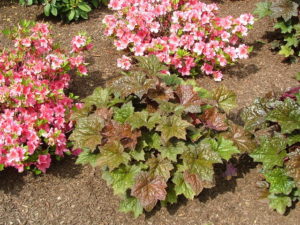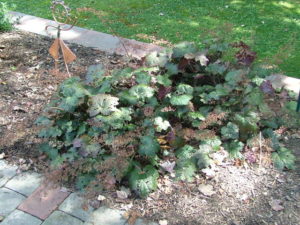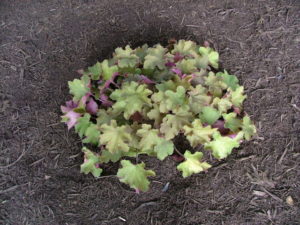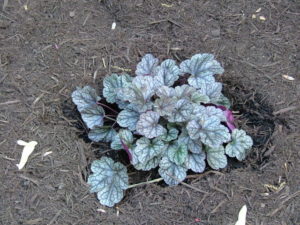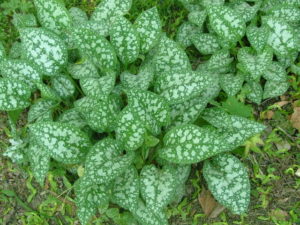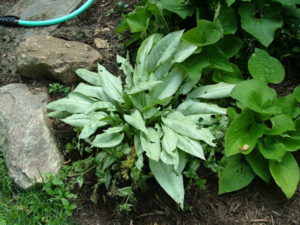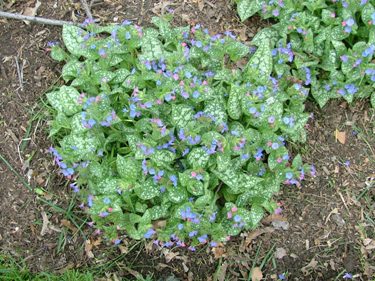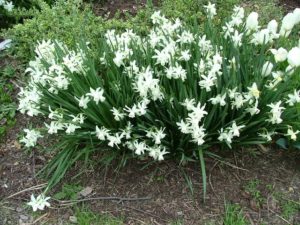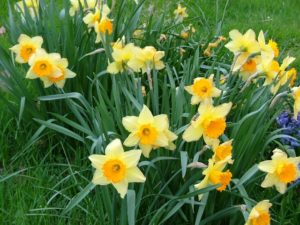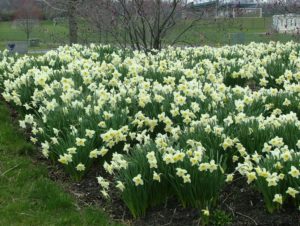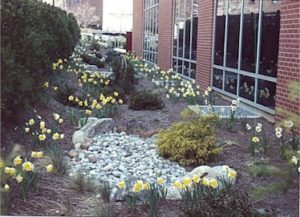I will try to show some deer resistant Perennials on this page, but like people, different deer have different tastes, so some plants that are not bothered in one yard could be a favorite in another. When food is scarce deer will eat almost anything if they are hungry enough. New foliage and young plants can be more tender than older foliage and established plants, so planting very small sizes of plants is not recommended. If you do plant smaller plants – or plants like liriope, which get more resistant to damage as they get more established – it is a good idea to spray a deer repellent on the foliage the first season, until the plant is established. In the same neighborhood the routes and trails deer take can be fairly consistent, so pressure on one property can be much greater than a house across the street.
Unfortunately like every other page that takes on this subject; I have to write that deer do not read this. They just taste plants and decide what they like, and like us they are less discriminating when they are hungry. You might have to expect a little damage and not depend too heavily on any one variety. I have seen hollies that did not have as pointy leaves as other varieties that have been eaten by deer, while the pointy varieties were left alone. Deer, especially young ones, will try different plants and this can damage plants that they don’t normally eat. I saw one row of ‘Green Giant’ Arborvitae – a plant deer normally leave alone, where the end plant had been damaged by all the tasting, but no other plant in the row had any significant damage.
Click here for a page I do have on my site with information on deer resistant shrubs and small trees.
Here are some other good links:
Rutgers Landscape Plants Rated by Deer Resistance also you can download a PDF from Rutgers with this information.
Here is another site deer-departed.com with 9 or 10 different lists of deer resistant plants.
And another site White Flower Farm has small thumbnail photos of deer resistant perennials – Click on the thumbnail on the White Flower Farms site and you get a larger photo and some information about the plant.
Helleborus – Christmas Rose and Lenten Rose – Very deer resistant and one of the first perennials to bloom in this area. Evergreen foliage is a plus and flowers can last a long time. I have seen some last for a couple of months when the weather is not too hot in spring. It is a very highly thought of plant in Horticultural circles, but I think it does have one drawback; the plant can be full of lots of flowers, but sometimes you still can’t see the nicest view of the flowers because the flowers have a tendency to face downward. Newer varieties have been developed to try to solve that problem, and I have included a photo with some pots from Terrain Nursery with the flowers more upright which is a big improvement.
- A nice grouping showing different colors.
- Newer variety with more upward facing flowers held over the leaves
Mertensia or Virginia bluebells: Another very early bloomer -about the same time as tulips and late daffodils – this is a native plant, and can be seen in spring growing along the creek in Valley Forge. Anything that can grow in Valley Forge must be very deer resistant. A few months after blooming the foliage does disappear -like many bulbs – but usually returns the next year. Just be careful planting other plants in the fall.
- Close-up of flowers
Achellia – Yarrow – Very Deer resistant, long blooming, and easy to grow perennials. Most of the nicer ones that I have seen are shades of yellow or red. We have dried the flowers of the yellow ones, and they stay colorful for months.
Nepeta – Catmint – A member of the mint family, which deer avoid, is a late blooming very colorful perennial. Plants grow up from clump in center and sort of fall down as they get heavy with flowers. Early bloom can be cut back to keep plant more compact.
Monarda – Beebalm – Another member of the mint family that deer avoid. Mid-summer bloomer, colorful and often used to attract Hummingbirds. Grows like regular mint, so it can spread rapidly, but is shallow rooted, and it is easy to pull out if it spreads out of bounds. Taller varieties tend to fall over in bloom, especially in shady situations, so I prefer shorter varieties.
- Close-up of bloom
Dicentra spectabilis – Bleeding Hearts – Deer resistant, early blooming perennial that forms large clumps with interesting heart shaped flowers. Does better with a little shade, and the foliage sometimes naturally dies back in hot weather, especially in the sun. Normally pink flowers.
- White Bleeding Hearts
Dicentra eximia – common name Fringed Bleeding Heart: Dicentra eximia is shorter and has smaller flowers than the more often seen Dicentra spectabilis, but it has a much longer period of bloom from May off and on through fall with pink heart shaped flowers. It also has nice foliage all season long with fine textured bluish gray leaves. It can grow in sun or light shade. A nice plant but not real showy; best seen up close.
Liriope – Somewhat Deer Resistant. May need a little protection while being established, as they get more resistant to damage as they get more established – it is a good idea to spray a deer repellent on the foliage the first season, until the plant is established.
Common name Lilyturf: Liriope is a great perennial for sun or shade. It is grown primarily for its foliage and I prefer the variegated varieties. Grass like leaves with blue flowers in August and September. Somewhat evergreen, but can look a little ratty in March, and probably should be cut back before new growth comes in for the best appearance. Does well in full sun, but can take also take some shade.
- Liriope Green – can have larger flowers than variegated variety. Some varieties form a dense ground cover.
- Liriope variegated group
- Liriope variegated with flowers
- Liriope Silver Dragon – a little more open and not asclump forming as the other varieties.
Ferns are usually very deer resistant and are nice old fashion plants that are great in a shady garden. Christmas ferns have evergreen foliage that will give you a nice look year round. Japanese painted fern has interesting leaves with different colors. There are many different varieties with different full grown sizes and textures to chose from. Ferns do not have colorful flowers so they work best when you are trying for a restful look in your shady garden.
- Christmas Fern – Evergreen fern with dark green fronds.
- Autumn Fern – Evergreen fern – fiddleheads and new fronds in spring have a reddish tint
- Ferns planted as an under story groundcover as commonly seen in nature.
- Japanese Painted Fern – interesting shades and texture.
Heuchera or Coral Bells – Like Liriope I think young plants can be nibbled on, but older plants are more resistant. Newer varieties are grown for their leaves and can take some shade. Leaves grow under 1-ft. high. Flowers on some varieties can get over 2-ft. high. Again it is a good idea to spray a deer repellent on the foliage the first season, until the plants are established. There is a lot of work currently being done with these plants and new varieties and leaf colors come out each year.
- ‘Palace Purple’
- ‘Palace Purple’
- ‘Caramel’
- ‘Silver Scrolls
Pulmanaria – Perennial that can take some shade. It gets nice small flowers in the spring, can be used as a slow growing ground cover. Some varieties have interesting (spilt milk) markings, and variegation on the leaves. Grows under 1-ft. tall. Nice blue buds changing to pink flowers in spring, but flowers are very tight to the plant and don’t last a long time, so the plant is grown mostly for its foliage.
- Pulmonaria – Blooms for a few weeks in Spring. Flowers are nice, and need to be seen close up because of their small size – but a nice plant for the foliage alone.
Deer Resistant Bulbs
The classic deer resistant bulb is the daffodil (or Narcissus). The definite go to bulb in deer country. They are almost always left alone by deer, and in the right location they can multiply and outlast all of us. They come in various shades of yellow, white, orange, and even pink shades. I like to use early small varieties of Narcissus instead of crocus (which squirrels will unearth and eat at times). Although Crocus are worth trying – in my last house it seemed we were overrun with squirrels, but they never bothered the crocus. In my current house the squirrels love to eat the crocus. When you plant them, don’t leave them out for the squirrels to accidentally find. Tulips, are beautiful and have a much larger color range, but unfortunately tulip flowers are loved by deer. Tulips are also usually short lived, even when left alone by the deer – and the squirrels and other rodents – which love the bulbs. The later varieties of daffodils can bloom at the same time as Tulips and are a much better choice in my opinion.
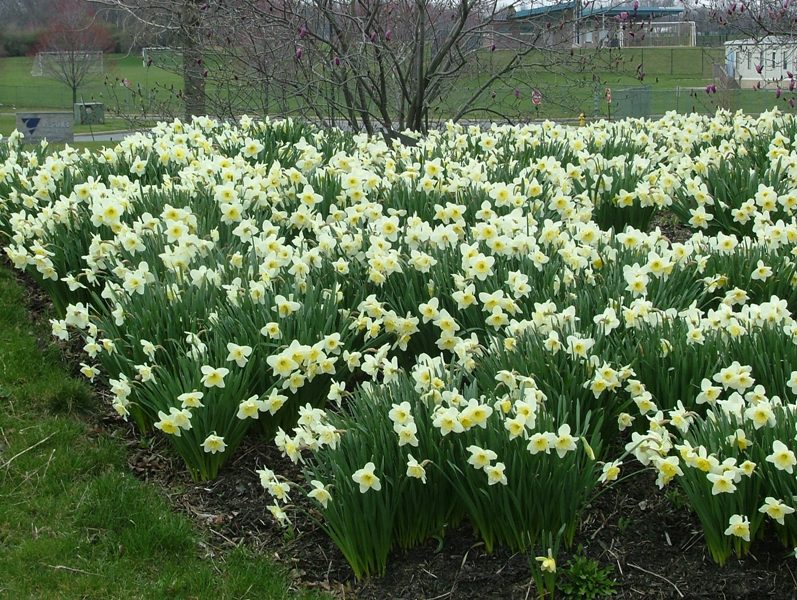 ‘Ice Follies’ – is a great variety for naturalizing. Each one of the tight clumps probably started out as one bulb.
‘Ice Follies’ – is a great variety for naturalizing. Each one of the tight clumps probably started out as one bulb.

